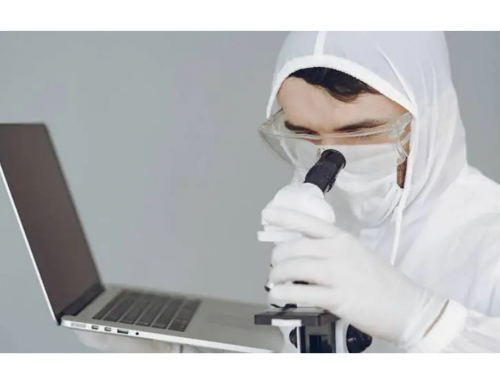
It’s made with standard cotton or synthetic yarn, with special electrodes woven in that include extremely thin electrocardiogram sensors that read vital signs and upload them to a monitoring device via Bluetooth or a Wifi connection to a cloud-based database, where the data is processed. If anything abnormal is detected, the patient’s doctors can be alerted, and a treatment protocol can be instituted right away.
“Our hWear T-shirt garments measure the highest quality vital signs all without adhesives, gels, or shaving preparations for both men and women. The garments are machine washable and compatible with most cardiac telemetry systems,” according to Uri Amir, HealthWatch CEO.
Currently, the T-shirts are registered with the FDA as Class I devices, but the company is applying to have them “upgraded” to Class II devices, so they can be used in professional medical settings. Only a few other companies have come out with similar shirts, so HealthWatch is ahead of the curve, said Amir. “The eHealth, TeleHealth, mHealth, and tele-cardiology industries can now deploy intensive-care quality telemonitoring without affecting the lifestyle of their users ranging from patients within a hospital environment, to homecare settings, to heart attack survivors, to the active elderly seeking better coverage of their health, or to users wishing to have direct contact with their expert personal physician from anywhere.”
The T-shirts are designed to work with HealthWatch’s MasterCaution sensor reader, which provides real-time alerts to both doctors and patients on cardiac events such as arrhythmia, ischemia, respiratory abnormalities, and sudden patient falls or prolonged immobility. “We are restoring the ‘wear’ into wearable technology,” said Amir. “Unlike other products that report only heart rate, our new healthwear garment is a true medical device monitoring full 15-lead ECGs along with other physiological vital signals. It will change the future of personal monitoring offering around-the-clock peace of mind to users — wherever their lifestyle takes them.”
Wearable tech is a hot topic now, so much so that large companies like Intel consider it one of the most important technologies for the coming years. According to Neil Cox of Intel Europe, “We expect 500 million wearables to be sold annually by the end of the decade. We’ve spoken to a lot of companies in recent months and they have a lot of great ideas on how they would use wearable tech.” Intel sees wearables as technology that will appeal to a wide variety of people — not just for those under constant medical supervision.
To that end, the company recently partnered with Barneys, the New York high-end department store, “to explore and bring to market smart wearable technology, and to increase dialogue and cooperation between the fashion and technology industries,” said Ayse Ildeniz, vice president of business development and strategy at Intel’s New Devices Group. “Through these initiatives we will combine Intel’s leading technologies with Opening Ceremony’s design prowess, Barneys New York’s track record to identify the next consumer trends, and CFDA’s commitment to advance innovation within the fashion industry. Our shared vision is to accelerate wearable technology innovation and create products that both enhance peoples’ lives and are desirable to wear.”
Source: TimesofIsrael.com






